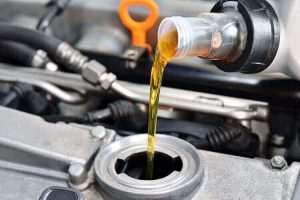The term “wheel alignment” describes the process of adjusting a car’s suspension system, which consists of the parts that attach the car to its wheels. Tracking the angles of the wheels with respect to the road and each other is part of these modifications. To maximize vehicle performance and safety, alignment is crucial. Uneven tire wear is the most obvious issue that may arise from a vehicle’s poor alignment. Ensuring that all four tires are making appropriate contact with the road is crucial for balanced wear and may be achieved by maintaining good wheel alignment.
The Effects of Inconsistent Tire Wear
Tires that wear down at varying rates are said to have uneven wear, which often results in significantly weaker tread in specific areas of the tire. One of the many possible causes of this ailment is misalignment. The tread may have bald patches or wear more on one side than the other when the wheels are not properly aligned, which may decrease handling and grip. Moreover, uneven wear may result in reduced fuel economy and more frequent tire changes, which can be expensive for the owner of the vehicle.
Regular Wheel Alignment’s Advantages
Beyond only reducing uneven tire wear, regular wheel alignment has many other advantages. One benefit is that it improves overall vehicle control, making the ride more stable and comfortable. It is more pleasant to drive a car that tracks straight and does not tug to one side when the wheels are properly aligned. The service of Auto Repair in Reynoldsburg, OH is essential here. Furthermore, well aligned tires improve fuel economy as they reduce rolling resistance, which makes it need more energy and fuel to maintain speed. Making sure that your automobile is aligned correctly might result in substantial gas pump savings.
Increasing Tire Life
Tire life may be greatly increased with regular alignment maintenance. Tire replacement may be necessary every 25,000 to 70,000 miles, depending on driving circumstances and alignment care. But that life expectancy drastically drops when tires are allowed to wear unevenly because of misalignment, requiring drivers to buy new tires much sooner than required. Maintaining wheel alignment increases tire longevity and minimizes replacement frequency by ensuring that the tread wears uniformly. By using less wasted rubber, this not only reduces environmental impact but also saves money over time.
Indications of an Alignment Check
Owners of vehicles must be aware of the warning indications that suggest wheel alignment may be required. Typical signs include the car tugging to one side, uneven tire wear, steering wheel vibration, or a steering wheel that is crooked while the car is traveling straight. It is imperative that an expert technician examine the alignment if any of these problems occur. Frequent checks may help avoid alignment concerns before they worsen. This is particularly true after major road incidents like running into a pothole or curb.






More Stories
The Role of Fuses in Car Power Lock Systems
Winter-Proof Your Classic Car: Sunroof Care Essentials
Professional Oil Change Repair Solutions for Cars